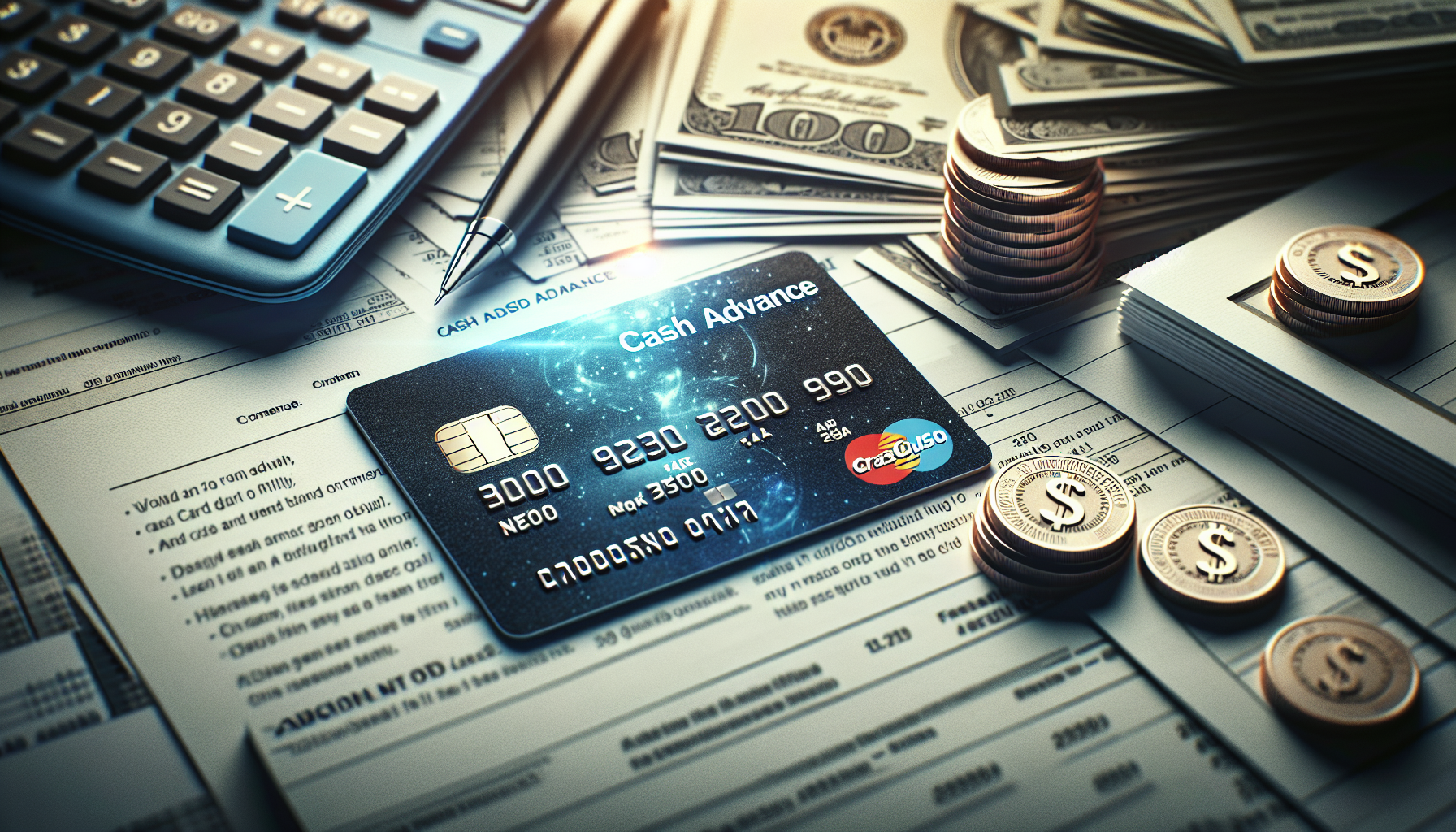What Is a Cash Advance on a Credit Card? | Explained & Fees
What is a Cash Advance on a Credit Card?
A cash advance on a credit card is a short-term loan that allows you to withdraw cash against your card’s credit line. It provides quick access to funds but often comes with additional fees and higher interest rates compared to typical credit card purchases.
How Cash Advances Work
When you take a cash advance, you are essentially borrowing money from your credit card’s available credit line. The amount you withdraw is added to your card balance and will be subject to a higher APR (annual percentage rate) than standard purchases. Cash advances also typically involve fees, such as a service charge from the issuer.
| Key Points About Cash Advances |
|---|
| Quick access to funds against credit line |
| Higher APR than regular purchases |
| Additional fees like service charges |
| No grace period, interest accrues immediately |
Types of Cash Advances
Cash advances can take various forms beyond simply withdrawing cash from an ATM or bank using your credit card. Some other types of transactions that may be treated as cash advances include:
- Money transfers via apps like PayPal or Venmo
- Paying off debts such as car loans or mortgages
- Exchanging dollars for foreign currency
It’s important to review your card’s terms to understand which transactions qualify as cash advances.
Fees and Interest Rates for Cash Advances
Taking out a cash advance on your credit card involves additional costs compared to regular purchases. These typically include cash advance fees and higher interest rates.
Common Cash Advance Fees
When you take a cash advance, you will likely incur a service charge from the card issuer. This fee can be either a percentage of the overall cash advance amount, such as 3-5%, or a flat fee, usually around $5-10.
Some common cash advance fees include:
- ATM fees if withdrawing from an out-of-network machine
- Service charges from issuer (percentage or flat fee)
- Additional bank fees if taking advance in-person from a teller
Cash Advance APR Explained
In addition to upfront fees, cash advances are subject to interest charges at a rate that is typically higher than your card’s regular APR for purchases. The average cash advance APR is around 25%.
Another critical difference is that there is usually no grace period for cash advances. This means interest starts accruing immediately from the date of the transaction. In contrast, with regular purchases, you can avoid interest by paying off your balance in full each month.
How to Get a Cash Advance
There are a few different ways you can get a cash advance from your credit card, depending on your issuer. The most common methods are ATM withdrawals, in-person advances at a bank, and convenience checks.
ATM Cash Advances
Many credit cards allow you to take out cash advances directly from an ATM. You will need to have a PIN set up for your credit card. Insert your card, enter your PIN, and choose the “cash advance” or “withdrawal” option. Keep in mind there are usually daily limits to how much you can withdraw.
In-Person Cash Advances
You can also take out a cash advance inside a bank by going to the teller and requesting an advance on your credit card. The teller will likely need to see your physical credit card and a form of ID. In-person advances are subject to the cash advance limits set by your issuer.
Convenience Check Cash Advances
Some credit card companies send convenience checks in the mail. These are checks tied directly to your credit card account, allowing you to write a check to yourself to deposit into your bank account. The amount will be added to your card balance as a cash advance.
Alternatives to Cash Advances
Before taking out a cash advance, consider some alternatives that may be less costly or risky. Cash advances should generally be used as a last resort due to their high fees and interest charges.
Personal Loans
A personal loan from a bank, credit union, or online lender will generally have lower interest rates than a credit card cash advance. They also have fixed monthly payments over a set loan term, making it easier to budget for repayment.
Use Your Credit Card to Make a Purchase
If you have the option to charge an expense instead of taking out cash to pay for it, using your card for the purchase directly is usually a better choice. You’ll pay the regular APR, may have a grace period in which to pay it off interest-free, and will avoid cash advance fees.
Borrow From Your Emergency Fund
Ideally, it’s wise to have some emergency savings on hand to avoid the need for a cash advance. Tapping your rainy day fund may be preferable to taking on high-interest debt. Just be sure to replenish what you borrow to maintain your financial security.
When to Consider a Cash Advance
There are some situations where taking a cash advance on your credit card may be necessary or make sense as a short-term solution. However, it’s crucial to understand the costs involved.
Understand the Full Costs Involved
Before using a cash advance, assess the fees, APR, and how it may impact your overall credit. Factor in the immediate interest accrual and create a plan for swift repayment. Borrow as little as possible to minimize fees and interest owed.
Cash advances can impact your credit utilization ratio, or the amount of revolving credit you’re using compared to your total credit limits. A high utilization can negatively impact credit scores. Avoid maxing out cash advance limits.
Cash Advances for Emergencies
A credit card cash advance may be a necessary last resort for situations like:
- Unexpected medical expenses
- Overdue rent or mortgage
- Urgent car repairs
- Emergency travel costs
As a general guideline, a cash advance may make sense if you have a concrete plan to repay the debt quickly and have no less-costly borrowing options. But the high fees and interest mean cash advances are best used sparingly for true emergencies only.
See also:
- What is 24% APR on a Credit Card? Explained | Your Ultimate Guide
- What Is a Good Interest Rate on a Credit Card? – [Your Blog Name]
- What is the name of the document that tells you what you need to pay on your credit card?
- What is APR on a Credit Card: Understanding How it Works
- What is the Minimum Payment on a Credit Card: Everything You Need to Know

